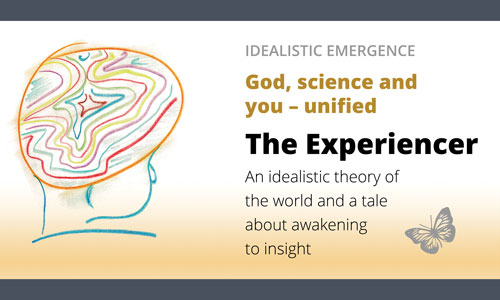8. The crisis and the breakdown
I am 55 years old and very intuitive, sensitive, open, alive – in a strange, depressing way. I receive solutions in my head. Realising them fails. Then I broke down.
Three months later, on March 20, 2016, something happened again.
It was Palm Sunday, the start of Easter.
I woke up in the spring sun from the window with a solution in my head. An intuitive insight, clarity, and absolute certainty that the idea was valid.
I grabbed a sheet of paper from the bedside table and drew a simple sketch with three circles and some lines between them. In addition, I drew a fourth element and a few more lines.
What was it?
It was the solution to a big problem in my industry, the media industry.
The principle sketch showed how the economics of the interaction between content providers, users and advertisers can be solved differently than today. The method benefits all three players based on their self-interests.
Win-win-win.
The solution is generic and can be used in every situation, including outside the media industry. The economic potential is enormous. The principle is simple. It would be relatively straightforward to realise the solution technically.
My invention would cut across the Gordian knot that has plagued the industry ever since the web came into being in the 1990s, namely how sites can monetise their content while users do not have to pay to consume it and advertisers get in direct contact with potential customers without killing them with ads.
It was big. It would work.
I immediately contacted a senior in the advertising industry. He liked the idea. I also reached out to a relative of mine with relevant expertise. He brought with him a trusted friend and resource person. I involved my wife's consulting company.
We started working on realising the idea.
The spreadsheets showed potential revenues in the order of billions of dollars.
I must tell this story some other time, but the short version is that the project failed spectacularly. It crashed into greed among those involved and opposition from an industry stuck in the old and bosses who felt threatened by the new.
I put all my energy into this for two years before realising it would not work.
Had I been twenty years younger, I would have turned around and attacked the case from a different angle, sneaked in the new solution via an unexpected channel, and approached the market from a surprising position.
In the spring of 2018, two years after the idea emerged and only weeks after I had given it up for good, I was in the think tank.
It was Easter again, and the family had been visiting my old father and his cohabitant in Germany. The others took the plane back; I drove the car up through Denmark and Sweden towards Oslo.
Something happened on that drive. Again.
It was long, about twelve hours. I hurried off on the relatively deserted road up towards the Norwegian border. It was evening, dark and about zero degrees. Thoughts swirled around the project and myself and my apparent inability to realise it – my lack of skills in building alliances and getting people to work with me.
The same old story.
The lonely, intelligent, stick-child – and all the ordinary, social, simple.
A familiar theme.
I sat in the car and pondered over myself and the future.
Something else also came into these thoughts.
A few weeks before the trip down to Germany, Alma began to appear in my dreams.
She had done that before, but not often and not so intensely.
This time she came, again and again, four, five nights in a row.
She simply appeared.
She did nothing, did not approach me, had nothing she wanted me to do.
But she showed up.
It was grief there. She was weak and distant but still clear.
I had resigned and was open to whatever was coming next.
I listened inward.
It didn't say bang.
It did not happen immediately, but something in me turned.
I had no idea it was happening, but it happened.
It was another turning point.
